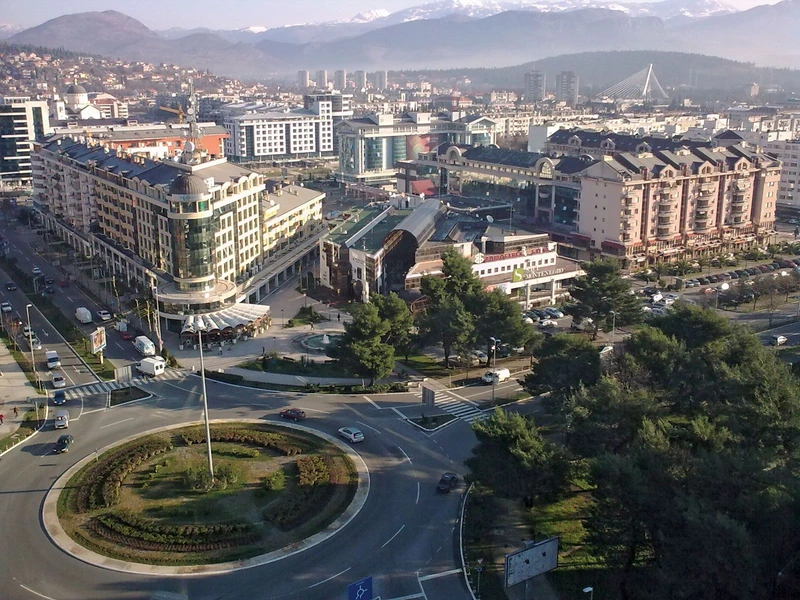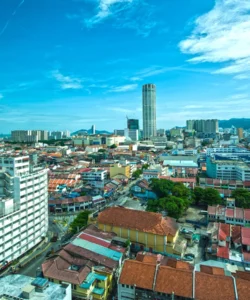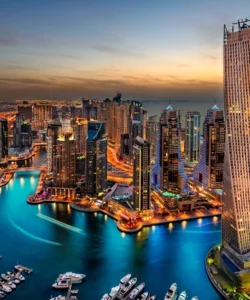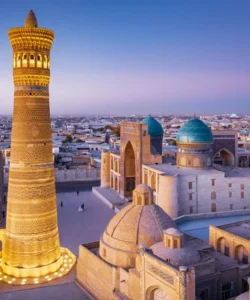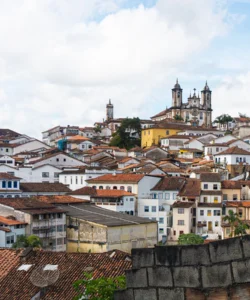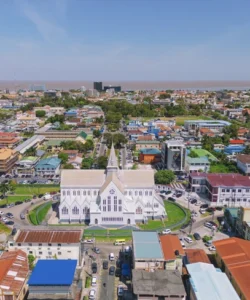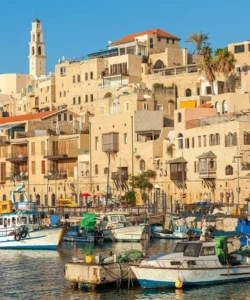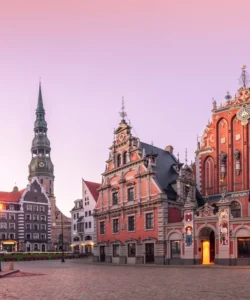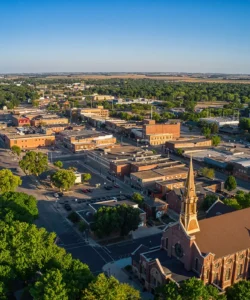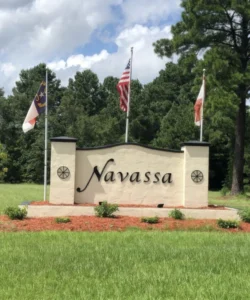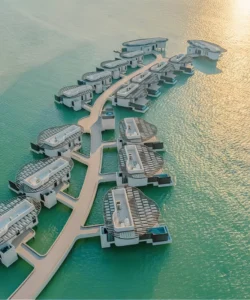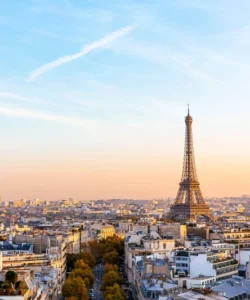Montenegro, officially Montenegro, is a country in Southeast Europe, situated on the Adriatic Sea, bordering Croatia, Bosnia and Herzegovina, Serbia, Kosovo, and Albania. It is celebrated for its dramatic mountainous landscapes, beautiful coastline, medieval villages, and a blend of cultural influences from its diverse history.
![]()
Area and Population:
Montenegro covers an area of approximately 13,812 km² (5,333 sq mi). As of early 2025, its population is estimated to be around 615,000 to 620,000 inhabitants, making it one of Europe’s smallest and least populated countries.
Capital:
The capital city of Montenegro is Podgorica. However, Cetinje holds the title of the Old Royal Capital (Prijestonica Cetinje) and has significant historical and cultural importance.
Major Cities:
Besides Podgorica and Cetinje, other significant cities and towns include Budva, Kotor, Herceg Novi, Tivat, Bar, and Nikšić.
Language:
The official language of Montenegro is Montenegrin. This is a standardized variety of Serbo-Croatian, and it is mutually intelligible with Serbian, Bosnian, and Croatian. Serbian, Bosnian, and Albanian are also recognized in certain areas. English is increasingly spoken, especially in tourist areas and among younger generations.
Currency:
Montenegro unilaterally adopted the Euro (€) as its de facto currency in 2002, despite not being a member of the Eurozone or the European Union.
Religion:
The dominant religion in Montenegro is Orthodox Christianity, primarily practiced by Montenegrins and Serbs. There is a significant minority of Muslims (mainly among Bosniaks and Albanians) and a smaller number of Roman Catholics (primarily among Croats and some Albanians).
Attractions and Wonders:
- Bay of Kotor (Boka Kotorska): A UNESCO World Heritage site, often described as Europe’s southernmost fjord (though technically a ria). It’s a stunning natural bay surrounded by towering mountains and dotted with picturesque medieval towns.
- Kotor Old Town: A UNESCO World Heritage site, this perfectly preserved medieval walled town nestled at the foot of dramatic cliffs is a labyrinth of narrow streets, charming squares, churches, and historic buildings. Don’t miss climbing to the Fortress of San Giovanni for incredible views.
- Perast: A charming baroque town in the Bay of Kotor, known for its elegant stone palaces and two picturesque islands: Our Lady of the Rocks (artificial island with a church) and Saint George (natural island with a monastery).
- Budva Old Town: A beautiful fortified medieval town on the Adriatic coast, known for its beaches, vibrant nightlife, and historic charm.
- Sveti Stefan: An iconic and luxurious island resort (formerly a fortified village) connected to the mainland by a narrow causeway, offering stunning photographic opportunities.
- Lovćen National Park: Home to Mount Lovćen, a revered symbol of Montenegrin statehood and identity. At its summit is the Njegoš Mausoleum, offering breathtaking panoramic views of the country.
- Durmitor National Park: A UNESCO World Heritage site in the north, featuring dramatic limestone peaks, glacial lakes (like the Black Lake), deep canyons (including the Tara River Canyon), and excellent hiking and rafting opportunities.
- Tara River Canyon: The deepest canyon in Europe and the second deepest in the world, popular for rafting and zip-lining.
- Ostrog Monastery: An incredible Serbian Orthodox monastery built almost entirely into a vertical cliff face, a major pilgrimage site with stunning views.
- Skadar Lake National Park: The largest lake in the Balkans, shared with Albania, a vital habitat for birds and offering scenic boat trips.
- Ulcinj: A southern coastal town known for its long sandy beaches and a unique blend of Montenegrin and Albanian cultures.
Architecture:
Montenegro’s architecture reflects its rich and often turbulent history, with influences from various empires and periods:
- Venetian: Most prominent along the coast, especially in the Bay of Kotor (Kotor, Perast), characterized by stone buildings, narrow streets, elegant palaces, and fortifications.
- Ottoman: Evident in some inland towns and in regions closer to Albania, with mosques, traditional houses, and bazaar-like structures (e.g., Podgorica’s Old Town remnants, Ulcinj).
- Austro-Hungarian: Some influence can be seen in public buildings from the late 19th and early 20th centuries, particularly in regions that were part of the Austro-Hungarian Empire.
- Montenegrin Traditional: Sturdy stone houses in mountainous regions, often built into the landscape.
- Socialist Modernism/Brutalism: Some larger, utilitarian structures and residential blocks from the Yugoslav era, particularly in Podgorica.
- Contemporary: New developments, particularly in coastal tourist areas (e.g., Porto Montenegro in Tivat), showcase modern and luxury architectural styles.
Roads:
Montenegro’s road network is continuously being improved, especially its coastal routes and connections to major towns, but mountainous areas can still present challenging conditions.
- Coastal Roads (Jadranska Magistrala): The main coastal highway (part of the E65/E80) offers stunning scenic drives but can be winding, narrow in places, and congested during peak tourist season.
- Inland Roads: Roads connecting cities like Podgorica, Nikšić, and the northern parts of the country are generally good.
- Mountain Roads: Roads leading to national parks and through mountainous regions can be winding, steep, and less well-maintained, sometimes lacking barriers. They require careful driving, especially in winter when snow and ice are common.
- New Motorway (Bar-Boljare): A major project is underway to build a motorway connecting Bar on the coast to Boljare on the Serbian border, with the first section (Podgorica-Mateševo) already open. This significantly cuts travel time through the mountains.
- Tunnels and Bridges: Numerous tunnels and impressive bridges are necessary to navigate the rugged terrain.
- Signage: Road signs are generally clear, primarily in Montenegrin (Cyrillic and Latin script).
Driving is often the best way to explore Montenegro’s diverse landscapes, but be prepared for varied conditions and scenic, sometimes challenging, routes.
Hotels:
Montenegro offers a rapidly expanding range of accommodation options, driven by its growing tourism industry.
- Luxury and Boutique Hotels: Particularly prevalent in the Bay of Kotor (Kotor, Tivat, Perast) and Budva, offering high-end amenities, stunning sea views, and often housed in beautifully restored historic buildings or new luxury developments (e.g., Porto Montenegro).
- Resorts: Larger resort complexes can be found along the Budva Riviera and other coastal areas, catering to package tourists and families.
- Traditional Stone Houses/Apartments: Many locals rent out private apartments or rooms, especially in the old towns and coastal villages, offering an authentic experience.
- Guesthouses (Konak/Pansion): Charming and often family-run guesthouses are available in smaller towns and rural areas.
- Mountain Lodges: In national parks like Durmitor and Lovćen, offering accommodation for hikers and nature enthusiasts.
- Hostels: Available in major cities and popular tourist hubs.
Restaurants and Cuisine:
Montenegrin cuisine is a delightful blend of Mediterranean (coastal) and traditional Balkan/Continental (inland/mountain) influences, characterized by fresh, seasonal ingredients and hearty flavors.
- Coastal Cuisine: Focuses on seafood, olive oil, and fresh vegetables, heavily influenced by Italian and Dalmatian cooking.
- Riblje Čorba: A rich fish soup.
- Grilled Fish and Seafood: Simply prepared with olive oil, garlic, and herbs.
- Crni Rižot: Black risotto with squid ink.
- Buzara: Mussels or shrimp cooked in a sauce of white wine, garlic, and herbs.
- Pršut: Air-dried ham, especially Njeguški pršut from the village of Njeguši (near Cetinje), often served with local cheese.
- Olives and Olive Oil: Widely used and often locally produced.
- Inland/Mountain Cuisine: More focused on meat, dairy, and heartier dishes.
- Kačamak: A hearty dish made from cornflour, potatoes, and cheese (kajmak), similar to polenta, often served with milk or yogurt.
- Cicvara: A dish made from flour, kajmak, and cheese.
- Japraci: Minced meat and rice wrapped in sour cabbage leaves (similar to sarma).
- Lamb Under the Sac (Jagnjetina ispod sača): Lamb slow-cooked under a metal bell covered with embers, making it incredibly tender.
- Grilled Meats (Mješano Meso): Mixed grill platters are popular, featuring ćevapi, sausages, and other meats.
- Kajmak: A rich, creamy, clotted dairy product, a staple throughout the Balkans.
- Bread and Pastries:
- Pekara: Bakeries offer various breads and pastries, including burek (flaky pastry with meat or cheese).
- Desserts:
- Baklava: Layers of phyllo pastry with nuts and syrup (Ottoman influence).
- Palačinke: Thin crepes with various sweet fillings.
- Drinks:
- Rakija: A strong fruit brandy (plum, grape, quince), widely produced and consumed.
- Vranac: A robust, dark red wine, the most famous Montenegrin wine, produced from the indigenous Vranac grape.
- Krstač: A refreshing local white wine.
- Nikšićko Pivo: A popular local lager beer.
- Coffee: Espresso and Turkish-style coffee are very popular.
Dining experiences range from traditional “konobas” (taverns) and seaside restaurants to modern eateries in tourist hubs. The hospitality and emphasis on fresh, local ingredients are hallmarks of Montenegrin dining.
